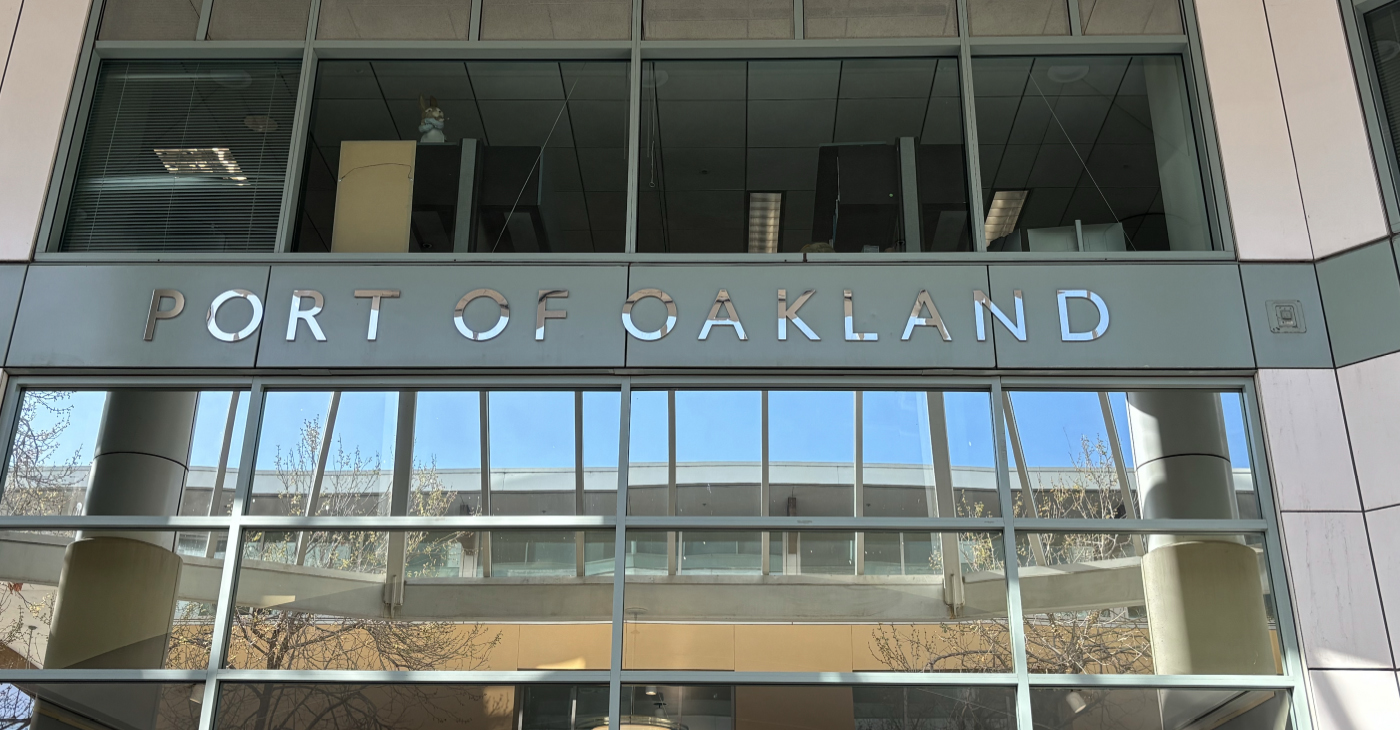Transportation
Car Review: 2015 Dodge Charger
By Frank S. Washington
NNPA Columnist
WASHINGTON, D.C., – Dodge is billing the 2015 Charger as the world’s only four-door muscle car. The brand says the restyled Charger is the quickest, fastest and most powerful sedan on the planet. What’s more, Dodge does have the right stuff under the Charger’s hood to back up the claim.
At the top of the power perch is the 2015 Dodge SRT Hellcat with a 6.2-liter supercharged V8 that makes 707 horsepower and 650 pound-feet of torque. Mated to an eight-speed automatic transmission, this four-door rocket has a top speed of 204 mph. That makes it faster than its corporate cousin, the Dodge Challenger Hellcat, with a top speed of 199 mph.
Next up was the 2015 Dodge Charger SRT 392. It was powered by a 6.4-liter normally aspirated HEMI V8 that made 485 horsepower and 475 pound-feet of torque. An eight-speed automatic gear box is standard to all trim lines of the new Charger.
Third on the Charger muscle scale is the 5.7-liter HEMI V8 that makes 370 horsepower. This model has cylinder deactivation that will shut off half of its cylinders when not needed. That’s most of the time.
Although the new car still looked like a Charger, everything about this Dodge has changed. Only the rear doors and the roof are the same. New were fenders, front and rear fascia as well as the front doors. The new aluminum hood appeared to be a little more curved.
The radius of the Dodge Charger’s side scallops was changed and the C-pillar was pulled rearward into the deck lid. The sedan had LED running lights and LED fog lamps. There were also front and rear performance fascias and side sills for the HEMIs, a new three-piece spoiler as well as black performance spoilers and SRT body color performance spoilers.
But amid all of Dodge’s intoxicating power and appearance packages, we decided to concentrate on the 2015 Charger with the least amount of power. We had experienced all of the HEMIs when we test drove the Challenger, it shares the same engine family. Thus, we opted to test drive the 2015 Dodge Charger SE, the entry level model.
It is nowhere near as exotic as its more powerful siblings but this car along with the SXT Charger is the volume model. In other words, Dodge will sell more copies of these two models then the others combined.
Powered by a 3.6 liter V6, engine that made 292 horsepower and 260 pound-feet of torque, that is bumped up to 300 horsepower with the Rallye Package, the SE also had an eight-speed transmission. All the forward gears help the 2015 Dodge Charger SE get 19 mpg in the city, 31 mpg on the highway and 23 mpg combined.
On a 100-mile drive to Summit Point Motorsports Park in West Virginia, we found the Dodge Charger SE to be a whole lot of car. There was a bunch of stuff our test vehicle didn’t have: no navigation system, no 8.4-inch touch screen or voice controls. But it did have the Charger chassis and styling.
The car was solid on what can only be described as a rain soaked day. Still, it was real world conditions and this Charger gave an excellent account of itself. Although the Charger can come with all-wheel-drive, we had a rear-wheel-drive version. Though the pavement was wet and looked slippery, the car’s grip on the road was sure.
It was solid, really solid. With every bump, crevice and rut we traversed in the pavement, we could feel the quality of its build. Our 2015 Dodge Charger SE was quiet as rain fell with every turn of its tires. Still, all of the weather and the congested traffic that came with it remained outside of the car. None of it was transmitted to the interior through wind or road noise.
The 2015 Dodge Charger was a sedan in function not just in its number of doors. We climbed into the back seats and had plenty of leg, head and hip room. The car could carry four adults in real comfort.
Power was there when we needed it. Yes, our 2015 Dodge Charger SE didn’t have the brute force of any of the HEMIs, but with 292 horsepower it wasn’t a snail. It had enough oomph to get out of the way, to stay out of the way, to lead when needed and to avoid texting-while-driving idiots. It handled with rifle shot accuracy.
Our test car featured Dodge’s customizable 7-inch full color information display. That is a lot words to say TFT screen. We had the five-inch touch screen and the aluminum bevel surround made them look like one unit. The new electronic T-shifter mimicked hydraulic gear selection which was a nice touch.
Our 2015 Dodge Charger had a couple of option packages: 18-inch all season performance tires, satin carbon aluminum wheels and a body colored spoiler. The second option package included satellite radio, rear park assist, remote start and a front license plate bracket for those regressive states.
The soft touch dash could have been a little softer but this was a base model. And we did think the plastic template on the climate controls could have been of a higher quality; not much just a notch. However, that undoubtedly would have increased the price.
For $30,580 as tested, we thought the 2015 Dodge Charger was a lot of car for comparatively few dollars.
With base prices ranging from $27,995 for the SE to $69,995 for the Hellcat, five engine choices and scads of trim lines, we think the 2015 Dodge Charger has a power and appearance package for just about every purse.
Frank S. Washington is editor of AboutThatCar.com.
###

Bay Area
Port of Oakland Commission Votes to Change Oakland Airport to ‘San Francisco Bay Oakland International Airport’
The Port of Oakland Commission voted unanimously to change the name of Metropolitan Oakland International Airport to San Francisco Bay Oakland International Airport at a commission meeting Thursday afternoon. The Port initially announced the name change on March 29, claiming that the change will attract more passengers and enhance the airport’s visibility. They contend that the airport often gets neglected by the public’s lack of knowledge of Oakland’s proximity to San Francisco.

By Magaly Muñoz
The Port of Oakland Commission voted unanimously to change the name of Metropolitan Oakland International Airport to San Francisco Bay Oakland International Airport at a commission meeting Thursday afternoon.
The Port initially announced the name change on March 29, claiming that the change will attract more passengers and enhance the airport’s visibility. They contend that the airport often gets neglected by the public’s lack of knowledge of Oakland’s proximity to San Francisco.
“We want people to know where Oakland is and how beautiful our city is. We want them to visit, we want them to spend their money, and we want to keep our money into our local economy,” Port Commission President Barbara Leslie said at the meeting.
The commissioners shared anecdotal experiences and research to explain how this new name change will elevate and add to the growth of Oakland, not take away from their Bay Area neighbors.
The Port claimed that local residents had been asking for more options in domestic and international flights, but in order to do that, outside travelers need to be aware of Oakland’s presence first.
Since the announcement of the new name, San Francisco leaders strongly opposed the suggestion for a change, the City Attorney going as far as threatening legal action.
SF City Attorney David Chiu announced Monday that his team sent a letter to the Port of Oakland, writing that if Oakland goes forward with the name change, the city will go forward with a lawsuit to prevent the use of their trademarked name.
San Francisco owns U.S. federal trademark registrations for the marks “San Francisco International Airport”, the letter says.
Chiu further claimed that the name change will only cause confusion and chaos for travelers who are used to seeing the San Francisco name in the SFO trademark.
“We want to see the entire Bay Area thrive as a tourist destination and expand our offerings to visitors, but this proposal is not a legal or practical way to go about it. If Oakland moves forward with this proposal, San Francisco will pursue legal action to prevent misuse of our trademark,” Chiu said.
SF Mayor London Breed joined Chiu’s letter, stating that Oakland does not need to add the internationally popular city to its brand in order to grow its services.
“[Oakland] is rich in culture and wonderful people and has its own unique identity. It does not need the name San Francisco as part of its airport to stand out,” Breed wrote.
The Port defended its proposed actions, saying that if the vote did go forward, they would “take all appropriate measures to defend its right to use this accurate geographic identifier.”
“The proposed name modification will clarify, not confuse. The new name identifies where OAK is actually located, which is on the San Francisco Bay,” a spokesperson said on behalf of the Port.
Support for the name change extends beyond the Port. Several regional leaders, airlines and community members have come out in support of the name change, including Oakland Mayor Sheng Thao.
“This adjustment isn’t just about signage—it’s about inviting travelers to discover all that Oakland and the region have to offer. From our local dining scene to unique shopping spots and cozy hotels, there’s something here for everyone. Let’s work together to ensure that Oakland Airport continues to serve as a welcoming gateway for visitors and a source of pride for our community,” Thao said.
Because of public outcry amongst residents and leaders in Oakland and San Francisco before and during the Commission meeting, the Board decided to extend the second reading for the proposed name change from the end of April to the first meeting in May. This decision will allow commissioners to connect with community groups and leaders over their concerns for the change.
The Port Commission is scheduled to hold a second reading of the proposed name change on May 9.
Bay Area
Oakland Finishes Final Draft of Downtown Specific Plan for Potential City Improvements
In late March, Oakland’s city administration announced the final draft of their Downtown Specific Plan, a blueprint for city improvements and developments over the next 20 years. The comprehensive 474-page plan lays out policies for downtown developments that will increase economic, social and cultural, and communal opportunities for residents and workers who frequent this essential hub in Oakland.

By Magaly Muñoz
In late March, Oakland’s city administration announced the final draft of their Downtown Specific Plan, a blueprint for city improvements and developments over the next 20 years.
The comprehensive 474-page plan lays out policies for downtown developments that will increase economic, social and cultural, and communal opportunities for residents and workers who frequent this essential hub in Oakland.
Several departments over the course of eight years developed the plan, with two phases that emphasized a need for community input from local stakeholders, such as leaders and residents, and a focus on the role of social and racial equity in past and future developments.
Throughout the extensive plan, the concept of equity for marginalized communities is embedded with each goal and priority for the improvements to downtown. It acknowledges that social and racial barriers are preventing these communities from thriving on an equal playing field.
The authors identified six key disparities, or ‘equity indicators’, that set the baseline for how success will be measured for the improvements. These indicators include the burden of housing costs, homelessness, displacement, disconnected youth, unemployment rate and median income.
The plan is also broken up into chapters, each describing a major issue or topic that is plaguing downtown residents and workers, such as mobility, culture preservation, community health and sustainability, and land use and urban design.
Within each chapter, the authors dedicate a section to the impacts of the COVID-19 pandemic for the various areas of interest, illustrating how disparities and inequities increased before and after the disease’s peak.
Two major issues highlighted in the plan are economic opportunity and housing and homelessness. Both of these issues have been aggravated by the pandemic and require substantial support and resources to move forward.
Many reports coming out of the commercial and residential districts downtown have blamed the rise in crime and cost of living as reasons for leaving Oakland for other cities or closing down indefinitely.
The plan attributes rising rents of both residential and commercial properties to the displacement of local businesses and entrepreneurs. Downtown also has an imbalance in the jobs to housing ratio, which limits access to jobs as commuting distances increase.
Other concerns for the local economy are barriers to employment opportunities for workers of color, non-English speakers, and those with limited access to transportation. As stated in the plan, downtown also has a lack of vacancies near public transit hubs, such as BART, bus stops or ferry terminals, which could save workers money and time for their commutes into the city.
According to the downtown plan, the average unemployment rate for the white population was 5.9%, but the Asian population was at 6.7%, and for the Black population it was even higher at 10.4%.
The proposed solutions for the lack of economic prosperity include providing assistance to local businesses owned by people of color, reinforcing downtown as the ‘place to be’ for nightlife entertainment, and building businesses closer to public transit.
The addition of over 18.3 million (m) sq. ft. of new commercial space, 1.3m sq. ft. of new institutional space, and 500,000 sq. ft. of new industrial space, could potentially create almost 57,000 jobs downtown.
Housing and homelessness, issues closely tied to economic prosperity, are top concerns for Oakland residents. High rents have led to displacement and homelessness for those unable to keep up with the rising costs of the Bay Area.
Over 5,000 people are currently experiencing homelessness in Oakland, according to 2022 Point In Time data. 60% of this population is Black despite only making up nearly 20% of the total city population.
The plan explains that by adding nearly 29,000 new homes and expanding affordable housing units across the city by 2040, this would help alleviate the stress of obtaining and affording a home.
Strategies proposed to tackle the housing and homelessness crisis include increasing renter protections, providing additional shelters and services for homeless residents, and promoting homeownership in downtown with first-time buyer assistance and proactive assistance to vulnerable homeowners.
The plan acknowledges that the implementation of changes and developments amongst the several concerns outlined in the document will take time, both in short and long term periods.
To better explain how and when each project will be addressed over the course of the next two decades, a detailed 123-page graph shows which agencies, potential funding sources, and costs come with the goals.
The Oakland Planning Commission and Landmarks Preservation Advisory Board will each hold public hearings regarding the final draft of the Downtown Plan in May and June.
Bay Area
Bikes Now Allowed on BART Escalators
As of Jan. 1, bikes are allowed on most of the escalators throughout BART, a new rule change that aims to make it easier for cyclists to board trains. Bikes will only remain banned from BART’s 10 narrow escalators located at the 19th Street Oakland, Antioch and Oakland Airport Connector stations, according to the transit agency.

The Richmond Standard
As of Jan. 1, bikes are allowed on most of the escalators throughout BART, a new rule change that aims to make it easier for cyclists to board trains.
Bikes will only remain banned from BART’s 10 narrow escalators located at the 19th Street Oakland, Antioch and Oakland Airport Connector stations, according to the transit agency.
BART is also now allowing bikes on all train cars except for the first car. Bikes were previously banned from the first three cars during commute times.
Ten years ago, BART ended a ban on bikes on the transit system during the commute hours. Over the last decade, the transit agency noted the growing popularity of larger, heavier bicycles.
“Carrying bikes up and down stairwells can be difficult and not all bikes fit in our elevators,” said BART Director Rebecca Saltzman. “Updating our rules will make BART easier to use for cyclists and families bringing bikes on the train. Bikes play an important role in getting people out of their cars and on public transit and these updated rules encourage environmentally friendly multimodal travel options.”
BART encouraged riders to use their best judgment when using escalators. The transit agency released a new video detailing safety tips for bringing bikes on escalators in the system.
BART offers this Elevator Dimension Guide to provide cyclists with dimensions of each elevator in the system, including measurements of the door, width, length, and diagonal space across the floor.
-

 Activism4 weeks ago
Activism4 weeks agoOakland Post: Week of March 27 – April 2, 2024
-

 #NNPA BlackPress4 weeks ago
#NNPA BlackPress4 weeks agoBeloved Actor and Activist Louis Cameron Gossett Jr. Dies at 87
-

 Community1 week ago
Community1 week agoFinancial Assistance Bill for Descendants of Enslaved Persons to Help Them Purchase, Own, or Maintain a Home
-

 Activism3 weeks ago
Activism3 weeks agoOakland Post: Week of April 3 – 6, 2024
-

 Business1 week ago
Business1 week agoV.P. Kamala Harris: Americans With Criminal Records Will Soon Be Eligible for SBA Loans
-

 Activism2 weeks ago
Activism2 weeks agoOakland Post: Week of April 10 – 16, 2024
-

 Community1 week ago
Community1 week agoAG Bonta Says Oakland School Leaders Should Comply with State Laws to Avoid ‘Disparate Harm’ When Closing or Merging Schools
-

 Community6 days ago
Community6 days agoOakland WNBA Player to be Inducted Into Hall of Fame














































